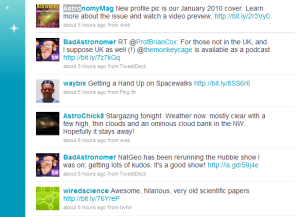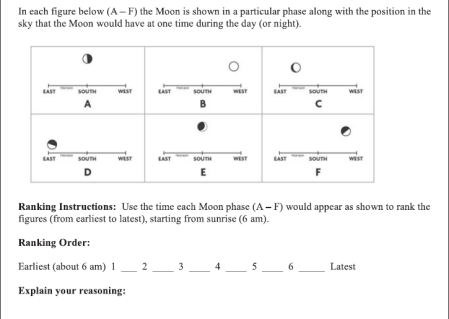
When someone becomes interested in astronomy those of us that are more experienced generally have some advice:
1) Don’t buy too little or too much telescope meaning make sure you get a good quality but get something you will actually use and you don’t have to break the bank!
2) Find a local club to join where you can learn and ask questions and be a part of a community of other astronomy enthusiasts.
But what it means to be a part of an astronomy community has been transformed by social networks, blogs, virtual observatories, and a the rapid way that information is spread online.
Social networking seems to be changing lots of things about the way people communicate and access information. Astronomy is no different. In fact it seems social networking sites such as Twitter and Facebook have had a big impact on the way amateurs connect with one another. Face-to-face clubs aren’t going away, but the experience of being a part of a community of people with a common interest can also happen online.
Twitter – the 140 character limit requirement makes astronomy tweets short and sweet. Here are a few ways that Twitter is changing amateur astronomy:
- Instant access to professional and amateurs from everywhere
- New community of astronomers with a different dynamic
- Information is disseminated rapidly about astro events and news

140 characters at a time
Facebook – you can connect with millions of like-minded astronomy fans, coordinate groups and events, and even post photo albums using Facebook. Here are a few ways Facebook is changing amateur astronomy:
- Networking with astronomers of all stripes
- Can be used by individuals and clubs for communication and event coordination
- Can post images & links

Facebook can manage events

Connect with millions of astronomy peeps
Blogs – If you take a look at the blog roll on this site you can see just a sampling of the kinds of astronomy blogs that are out there. From professional astronomers and science writers and space agencies, to astronomy educators, to observation logs, to astronomy news, to podcasts you can really see the wide variety and quality of astronomy material available in blog form.
- As a reader you can get ALL the news out there for all astronomy topics sooner than the print stuff
- Many publications are using blogs and other online content to entice readers or reward subscribers
- As a blogger you can help spread news and contribute yourself and be a part of astronomy blogging community
Forums– When you are looking for help with astronomy equipment or astrophotography or need reviews and advice on what to buy or sell or if you want to exchange ideas with other astronomers you can probably find a forum.
- CloudyNights.com is the best place to get reviews and ask questions about equipment as well as to find a thriving marketplace for used stuff.
- UnmannedSpaceFlight.com is a serious place for the armchair astronaut. You can keep up with the latest on robotic spacecraft or rovers and share in the excitement as new images are plucked from obscure web servers and open for discussion.
Virtual Observatories – anyone can access professional-quality equipment and access real research data with these tools.
- Galaxy Zoo lets anyone be a part of the science using robotically collected data. Users categorize galaxies and mergers better than any software.
- Tzec Maun Foundation is non-profit group that gives access to telescopes and clear dark skies for education and research purposes.


















